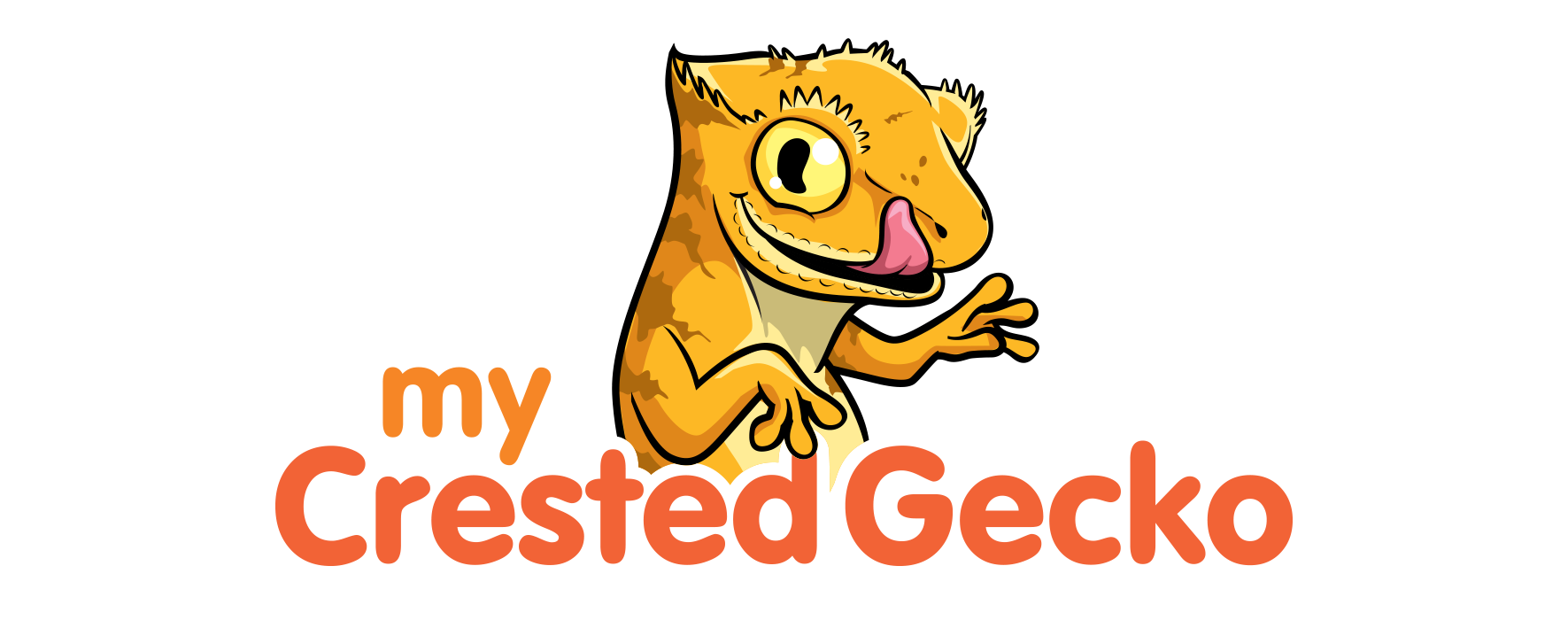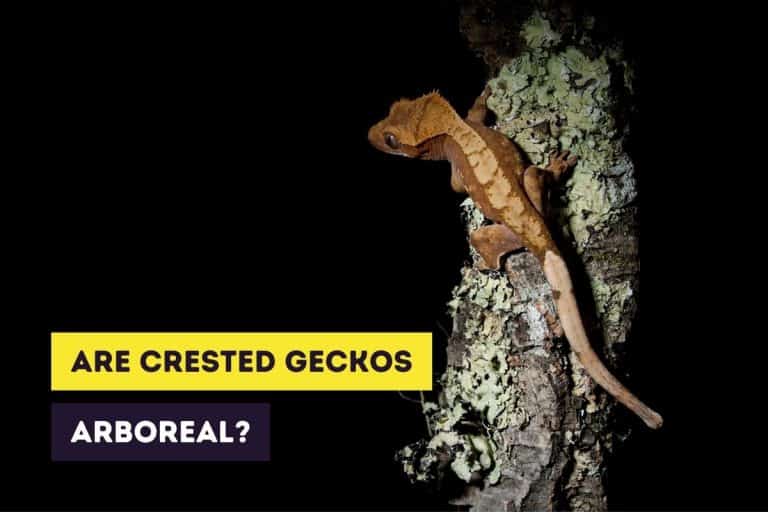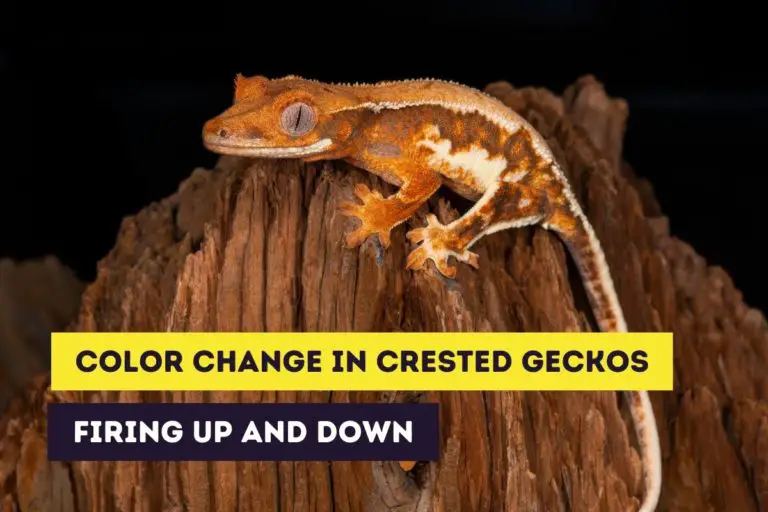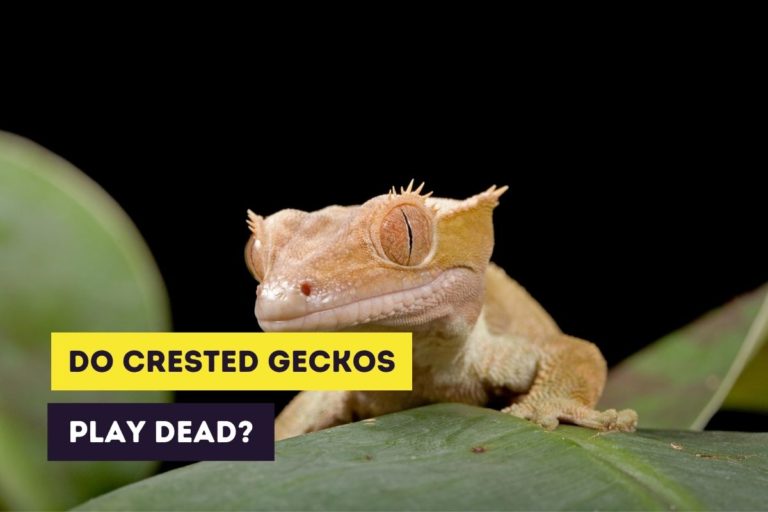Can Crested Geckos Live With Bearded Dragons?
Estimated reading time: 7 minutes
Crested geckos are one of the most popular pet lizards but another very popular pet reptile is the bearded dragon. Both are interesting-looking reptiles and a true herpetologist might want to own both species. If you’re planning on keeping both together you’ll need to know whether or not a crested gecko can live with a bearded dragon.
Crested geckos can’t be kept with bearded dragons. Crested geckos and bearded dragons have very different needs. You won’t be able to satisfy the needs of both of them in one terrarium without hurting one of them. A bearded dragon can severely hurt a crested gecko since they’re very territorial.
While both crested geckos and bearded dragons are popular pet reptiles they have very different backgrounds. One needs a horizontal, dry, and hot terrarium, while the other one needs a vertical, humid, and “room temperature” terrarium. Bearded dragons are also notably larger than crested geckos when they’re adults.
If you’re interested in stickers or other products of crested geckos, you can always visit our Etsy Shop, which is called Artful Animalia. We currently only send stickers in the United States. If you’re interested in certain crested gecko-related products, don’t hesitate to contact us.
In this article, you’ll learn a little bit about bearded dragons and the differences between crested geckos and these bearded dragons so you understand why both can’t be kept in the same terrarium.
This site contains affiliate links to products we recommend and use ourselves. We may receive a commission for purchases that you make through these links. If you’re interested in learning more about our affiliate links, please visit our (affiliate) disclaimer.
Introduction to Bearded Dragons
Bearded dragons (Pogonas) are a genus of reptiles. Eight different lizard species share the name bearded dragons. Taking a quick look at the picture of a bearded dragon below will probably give you a good idea of the name.
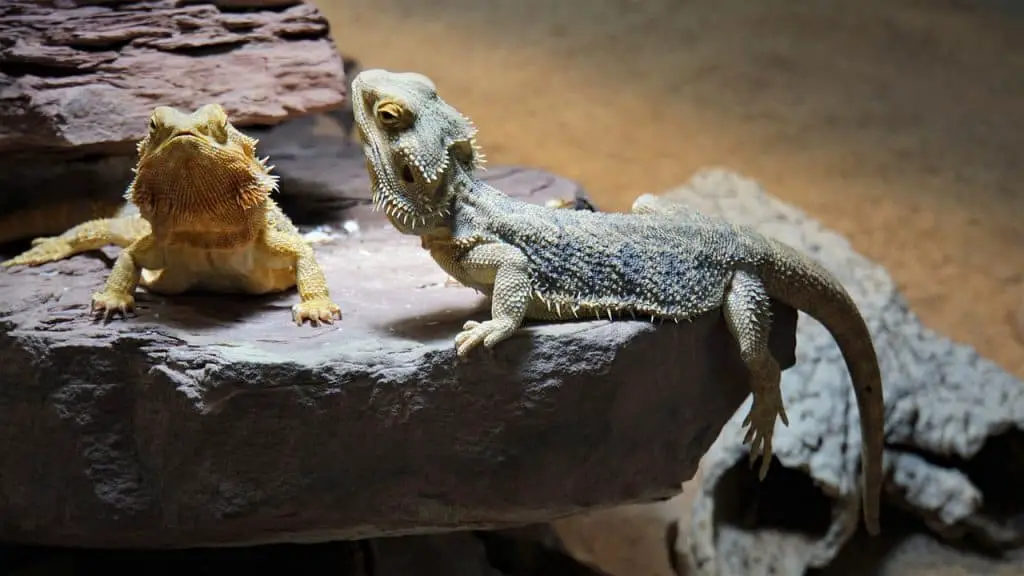
Under the throat, a form of beard is visible. Bearded dragons display their beards under certain circumstances and they can also be inflated.
Activity
Bearded dragons are diurnal, meaning they sleep during the night and are active during the day. So, you won’t hear any noises from your bearded dragon when you’re sleeping at night.
Social behavior
Adult bearded dragons are very territorial and will defend their territory. You shouldn’t put adult male bearded dragons together as this will undoubtedly cause problems. Bearded dragons can be kept as crested geckos as solitary animals to prevent fighting or breeding.
Size and weight
Male bearded dragons grow up to be 24 inches (60 centimeters) long, while female bearded dragons will reach up to 20 inches (51 centimeters). An adult bearded dragon will weigh between 10 and 20 oz (350 to 600 grams).
Natural Habitat: Crested Gecko vs Bearded Dragon
The natural habitat of crested geckos
Crested geckos live in the rainforests of New Caledonia in an environment with a cold and dry season and a wet and hot season. Crested geckos are arboreal and will spend time on trees, plants, and the ground. Therefore, they need a vertical terrarium with plenty of room to climb on branches.
The natural habitat of bearded dragons
Bearded dragons live in Australia in a predominantly hot and dry environment. They can be found in habitats like deserts, shrublands, and woodlands. Like crested geckos, bearded dragons are semi-arboreal, although they don’t need a vertical but a horizontal terrarium. They will spend most of their time on branches or rocks basking in the sunlight.
Temperature: Crested Gecko vs Bearded Dragon
Temperature needs of crested geckos
Crested geckos live in a tropical environment but can’t tolerate temperatures too high or too low. A suitable temperature for a crested gecko during the day ranges from 72 to 78 °F (22 to 25 °C). At night, the temperature can be lower, running between 69 and 74 °F (20 to 23 °C).
Temperatures should never exceed 85 degrees Fahrenheit (29 degrees Celsius) unless your crested gecko can retreat to a much cooler area in the terrarium. If they’re not able to do this, your crestie will suffer from overheating.
Temperature needs of bearded dragons
Bearded dragons live in a hot environment and need a natural temperature gradient with a hot basking spot that’s between 100 and 110 °F (38 to 49 °C) and a cooler place that’s between 75 and 85 °F (24 to 29 °C). At night, you should turn off the basking light and you can use a night heat lamp or ceramic heat emitter. The temperature at night should be between 66 and 75 °F (18 to 24 °C).
Humidity: Crested Gecko vs Bearded Dragon
Humidity needs of crested geckos
Crested geckos are used to a humid environment and need the humidity to shed their skin and stay healthy properly. However, they can’t tolerate a humidity that’s too high and may suffer health issues when kept in a terrarium with an average humidity above 80 percent. On average, the humidity of a crested gecko terrarium should range from 50 to 70 percent.
Humidity needs of bearded dragons
Bearded dragons are used to a dry environment and originate from Australia where they live in deserts, shrublands, and woodlands. On average, the humidity of a bearded dragon terrarium should range from 20 to 30 percent. If the humidity gets below 20 percent, you should mist the terrarium to increase the humidity slightly.
Diet: Crested Gecko vs Bearded Dragon
Diet of crested geckos
Crested geckos are omnivores eating both plants and animals. The diet consists mainly of insects, (rotten) fruit, and pollen from flowers in the wild.
In captivity, crested geckos are mostly fed a meal replacement powder that contains most of the necessary nutrients. You should add vitamins and supplements to create a well-balanced diet. Insects like crickets can be occasionally fed and fruit and worms should only be fed as a treat (when on a diet based on meal replacement powder or granulate food).
Diet of bearded dragons
Bearded dragons are omnivores and their diet consists mainly of insects such as crickets and dubia roaches. However, they also eat plants, primarily leafy greens such as watercress, kale, and spring greens. Bearded dragons will prefer live prey over plants but, in captivity, they can also be fed commercial diets that provide a well-balanced diet for them.
Can Crested Geckos Live With Bearded Dragons?
From the differences between crested geckos and bearded dragons, you can see that it isn’t wise to put them both in the same terrarium. You can’t get the right kind of humidity and temperature for both animals and trying to balance the two is not possible without hurting one or both animals.
But the humidity and temperature aren’t the only problems you’ll encounter. Crested geckos aren’t very aggressive, but they can get territorial. Bearded dragons become very territorial when they grow up and defend their territory. They could attack and bite your crested gecko.
Bearded dragons have sharp teeth and have more biting power when they’re adults. Combine this with the smaller size of crested geckos and you’ll know that they can get injured and stressed.
So I wouldn’t recommend putting both animals in the same terrarium. Your crested gecko will likely be stressed, get bitten, or even get killed by the bearded dragon. It’s not worth putting it in such a risky situation if you’re an animal lover.
Should You Get a Crested Gecko or Bearded Dragon?
Since a crested gecko can’t live with a bearded dragon, you have two options:
- get both a crested gecko and bearded dragon and keep them in separate terraria
- get only a crested gecko or a bearded dragon
If you’re interested in getting a crested gecko, you should read more about why a crested gecko is a good pet and when it’s suitable for you.
Bearded dragons can also make great pets as they’re easy to take care of, are relatively cheap to feed, and can be great for beginners. If you’re interested in bearded dragons, read this helpful article.
Want to Learn More?
If you want to learn more about crested geckos as pets, please read the following articles.
If you’re interested in getting crested geckos as pets you should also definitely read our article about baby and juvenile crested gecko care or (adult) crested gecko care.
